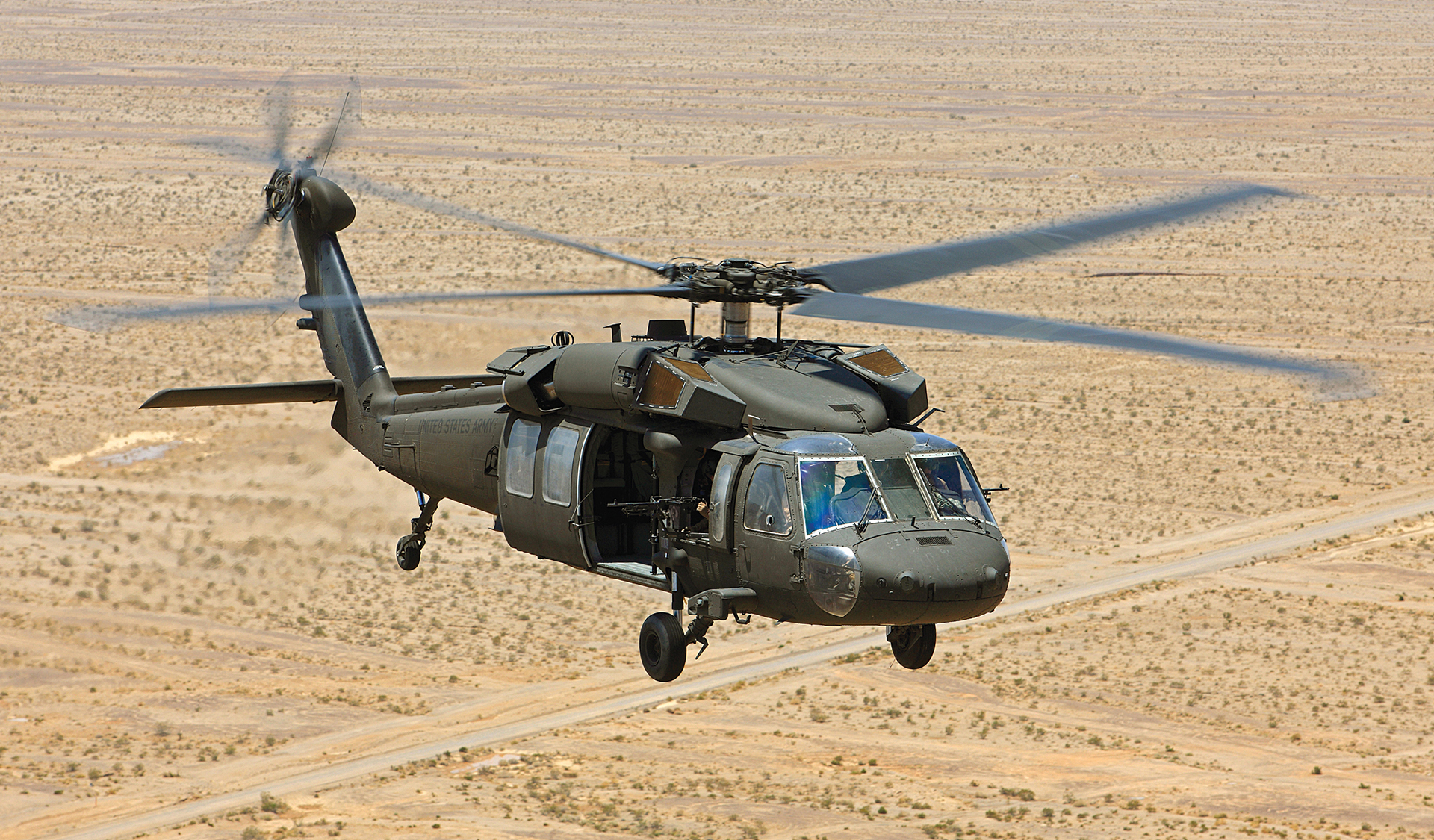Making The Most Of Safety And Security: Important Maintenance Tips for Your UH 60 Helicopter
Making The Most Of Safety And Security: Important Maintenance Tips for Your UH 60 Helicopter
Blog Article
Recognizing the Mechanics and Design Behind Uh 60 Helicopters
The UH-60 helicopter, typically understood as the Black Hawk, stands as a peak of contemporary rotorcraft modern technology, symbolizing a blend of durable design and elaborate auto mechanics. As we peel back the layers of the UH-60's design, a world of elaborate systems and meticulous engineering comes to light.
Background of UH-60 Helicopters
The background of UH-60 helicopters traces back to the late 1970s when the USA Military looked for a advanced and functional energy helicopter to change its aging fleet. In response to this demand, the Sikorsky Airplane Corporation created the UH-60 Black Hawk helicopter. Presented in 1979, the UH-60 rapidly came to be a staple in armed forces procedures because of its outstanding abilities.
The UH-60 was made to master a range of missions, including troop transportation, medical emptying, digital warfare, and special procedures. Its ability to adjust to different duties made it a useful asset to the united state Army and other military forces all over the world
Over the years, the UH-60 platform has undergone numerous upgrades and variants to improve its performance and maintain pace with advancing mission requirements. These helicopters have actually seen extensive solution in disputes such as the Gulf War, Afghanistan, and Iraq, showcasing their dependability and flexibility in varied functional environments. The UH-60's rich history is a testimony to its long-lasting heritage as a top utility helicopter.

Engine and Power Solutions
Utilizing cutting-edge propulsion innovation, UH-60 helicopters are furnished with advanced engine and power systems to ensure optimum performance and reliability in a series of operational scenarios. The UH-60, commonly referred to as the Black Hawk, is powered by two General Electric T700-GE-701D engines, each with the ability of delivering up to 1,940 shaft horsepower. These turboshaft engines provide the essential drive for the helicopter to carry out its missions efficiently, including army transportation, medical discharge, and combat support.

Rotor System and Aerodynamics
Exactly how do the rotor system and the rules of aerodynamics of UH-60 helicopters contribute to their functional performance and flight capabilities? The blades system of the UH-60 helicopter plays a critical function in giving lift and propulsion. The UH-60 includes a four-bladed, totally verbalized blades system that enables for high ability to move and stability throughout trip. This style enables the helicopter to execute a wide variety of goals, from transport and clinical evacuation to battle operations.
The rules of aerodynamics additionally play a crucial function in the performance of UH-60 helicopters. The streamlined fuselage and blades blade style reduce drag, permitting the helicopter to accomplish higher rates and much better gas effectiveness. The wind resistant style of the UH-60 also adds to its capacity to run in varied ecological problems, including high altitudes and warm temperatures.
Avionics and Flight Control Systems

In its detailed sychronisation with the blades system and aerodynamics of UH-60 helicopters, the avionics and flight control systems create an important network of technologies shaping the check out here aircraft's operational capabilities. Avionics incorporate the electronic systems made use of for interaction, navigating, and checking different aircraft functions. In the UH-60, these systems consist of digital display screens, communication radios, view it now GPS navigating, climate radar, and autopilot systems. These avionics systems provide critical details to the pilots, boosting situational recognition and ensuring secure and reliable procedure of the helicopter.
The trip control systems of the UH-60 are accountable for translating the pilot's inputs into the appropriate adjustments to the rotor system, guaranteeing stable trip and maneuverability. These systems include hydraulic actuators, servos, and computers that collaborate to regulate the major and tail blades, in addition to various other trip control surfaces. By specifically taking care of the helicopter's trip characteristics, these systems allow pilots to perform a large range of missions, from transport and search-and-rescue to fight operations, with accuracy and confidence.
Duty and Applications in Air Travel
Avionics systems in UH-60 helicopters encompass a variety of digital systems that help in navigation, communication, tracking, and managing various airplane functions. These systems include digital screens, autopilot systems, communication radios, General practitioner navigation tools, and weather radar. Additionally, these systems incorporate safety attributes such as auto-pilot settings, terrain understanding warning systems, and stability augmentation systems to enhance the general safety and security and operational abilities of the UH-60 helicopters in various objectives, including troop transport, medical evacuation, search and rescue, and airborne firefighting.
Conclusion
In verdict, the UH-60 helicopter is a functional aircraft with an abundant history and progressed engineering. Its engine and power systems, rotor system, aerodynamics, avionics, and trip control systems all function with each other to make it a trusted official website and reliable device.
In its complex sychronisation with the blades system and the rules of aerodynamics of UH-60 helicopters, the avionics and trip control systems form a critical network of modern technologies forming the airplane's functional capabilities.The flight control systems of the UH-60 are liable for converting the pilot's inputs into the suitable modifications to the blades system, making certain secure trip and ability to move. Avionics systems in UH-60 helicopters include an array of electronic systems that aid in navigation, communication, tracking, and controlling numerous airplane functions. Furthermore, these systems integrate safety and security functions such as autopilot settings, terrain awareness alerting systems, and stability enhancement systems to improve the total safety and security and operational abilities of the UH-60 helicopters in different goals, including army transportation, clinical emptying, search and rescue, and airborne firefighting.
Its engine and power systems, rotor system, aerodynamics, avionics, and trip control systems all work together to make it a efficient and trusted machine.
Report this page